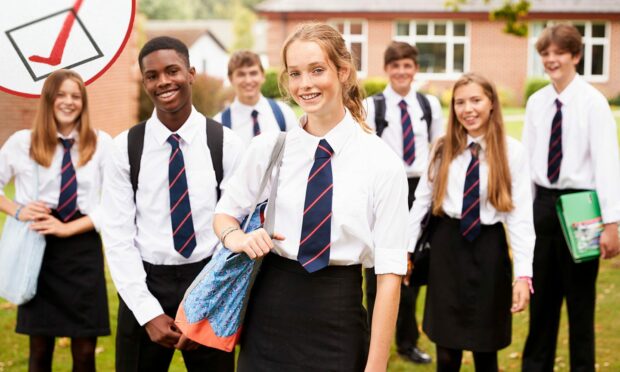An Aberdeen academy tops our School League Tables for the second year in a row.
Cults Academy led the way with 74% of its school leavers earning five or more Highers in 2022, compared to 78% in 2021.
Oldmachar Academy in Aberdeen reported the biggest jump last year. In 2022, 54% of leavers earned five or more Highers compared to 42% in 2021.
Meanwhile, Gairloch High School in Highland Council reported the steepest decline, dropping 20 points this year from 45% to 25%.
School League Table 2023
You can use our searchable School League Table below to see how your school performed in 2023. Or, search by council area for comparisons.
Note: The Scottish Government withholds data when it could be used to identify individual children. In this context, some schools are marked “c”, meaning that there were either too few children who earned five or more Highers, or too few who did not.
A second note: A Scottish Government spokesman said that some schools were marked with a “z” which means that there are no applicable statistics. This is recorded at eight smaller schools in the islands, where it may be that there weren’t enough pupils at a certain grade level for reporting this data.
At schools where statistics were available, here’s which schools reported the highest percentage of leavers with five or more Highers in each council area:
- Aberdeen City: Cults Academy (74%)
- Aberdeenshire: Westhill Academy (58%)
- Highland: Ullapool High School (56%)
- Moray: Milne’s High School (51%)
- Orkney: Stromness Academy (35%)
- Shetland: Anderson High School (39%)
- Western Isles: The Nicholson Institute (27%)
The Scottish Government school database did not provide a national average for the 2021/2022 school year. Between 2017 and 2021, the national figures ranged from 36% to 42%.
The numbers in context
Keep in mind that the statistics on our 2023 School League Tables are only a snapshot of how schools performed.
In addition to environmental factors, exams in 2022 and 2021 followed very different formats from what students and teachers were used to before the Covid-19 pandemic.
Given the variation across schools in how exams were delivered in 2021 and 2022, our table compares each school’s 2022 results to its own reports from 2021.
A Scottish Government spokesman reiterated the differences in how students earned qualifications in recent years.
“Caution should be taken when comparing these figures as different approaches were taken to determining grades in 2020, 2021 and 2022.”
Full data on further qualifications and school information can be found online on the Scottish Government’s School Information Dashboards.
And with a major overhaul of the qualifications system due in the next few years, some education experts believe that this method of measurement could soon be put to bed altogether in favour of a system that focusses less on subject work and more on students’ broader achievements.
The Scottish Government also tracks a variety of demographic and economic information at every school. This contributes to the Scottish Index of Multiple Deprivation (SIMD).
The Government ranks areas from SIMD 1 (most deprived) to SIMD 5, (least deprived). Deprivation is measured across seven key areas: income, employment, education, health, access to services, crime and housing.
Our tables show the percentages of pupils at each school who are living in the most deprived areas.
Read more from the Schools and Family team
Exclusive: Hazlehead Academy bus service back from the chopping block
‘The young people at Northfield are incredible’: Council seizing opportunity for much-needed change
New NatureScot report says school children need to be more connected to nature

Conversation